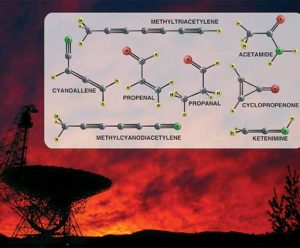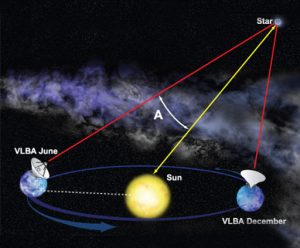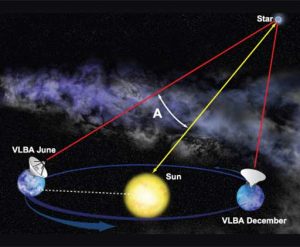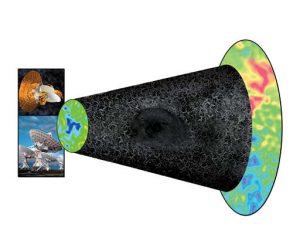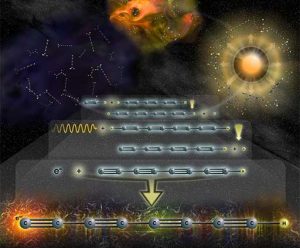Scientists are using the giant Green Bank Telescope to go prospecting in a rich molecular cloud in our Milky Way Galaxy.
VLBA Yields Rich Scientific Payoffs
Having the sharpest pictures always is a big advantage, and a sophisticated radio-astronomy technique using continent-wide and even intercontinental arrays of telescopes is yielding extremely valuable scientific results in a wide range of specialties. That’s the message delivered to the American Astronomical Society’s meeting in Austin, Texas, by Mark Reid of the Harvard-Smithsonian Center for Astrophysics, a leading researcher in the field of ultra-precise astronomical position measurements.
VLBA Changes Picture of Famous Star-Forming Region
Using the supersharp radio vision of the National Science Foundation’s Very Long Baseline Array, astronomers have made the most precise measurement ever of the distance to a famous star-forming region.
Astronomers Find Enormous Hole in the Universe
Astronomers have found an enormous hole in the Universe, nearly a billion light-years across, empty of both normal matter such as stars, galaxies, and gas, and the mysterious, unseen dark matter.
Charged Molecule Discovery
Astronomers using data from the National Science Foundation’s Robert C. Byrd Green Bank Telescope have found the largest negatively-charged molecule yet seen in space. The discovery of the third negatively-charged molecule, called an anion, in less than a year and the size of the latest anion will force a drastic revision of theoretical models of interstellar chemistry, the astronomers say.
VLBA Helps Build New Picture of Star-Forming Regions
New, high-precision distance measurements by the National Science Foundation’s Very Long Baseline Array (VLBA) radio telescope are providing a major advance for astronomers trying to understand how stars form.






